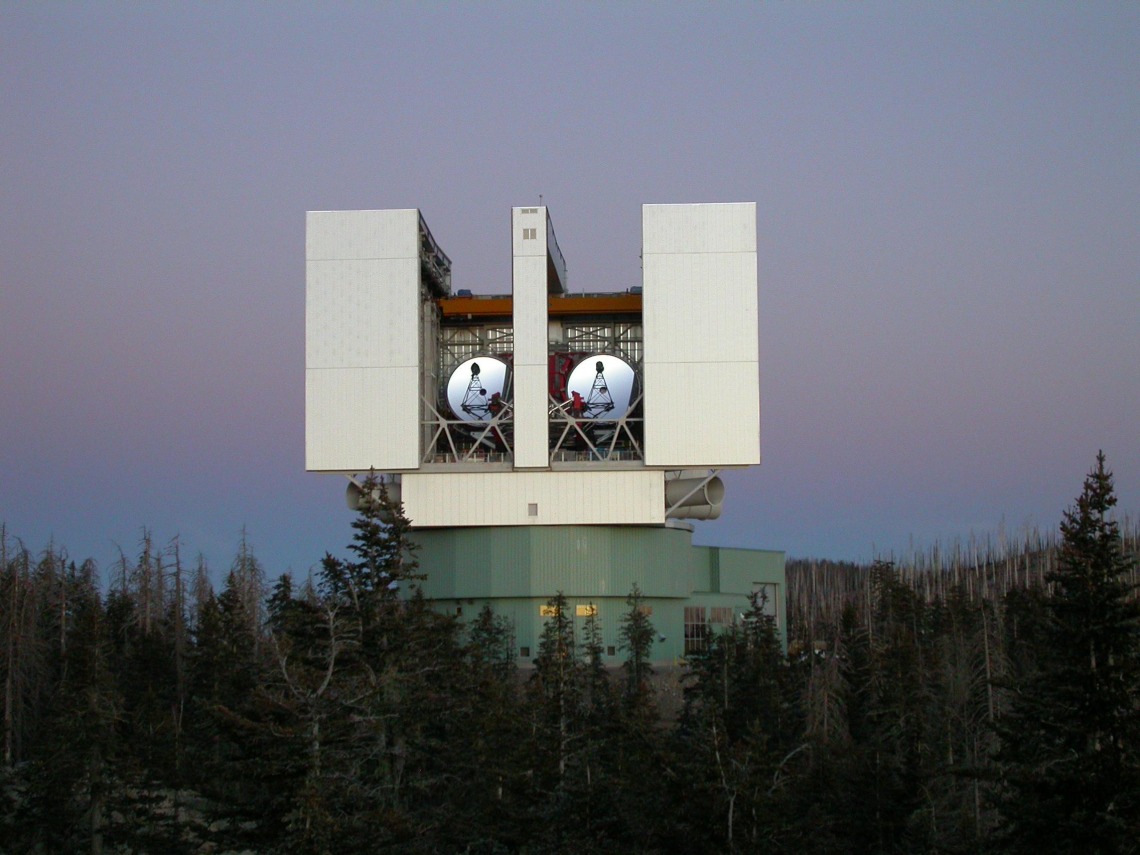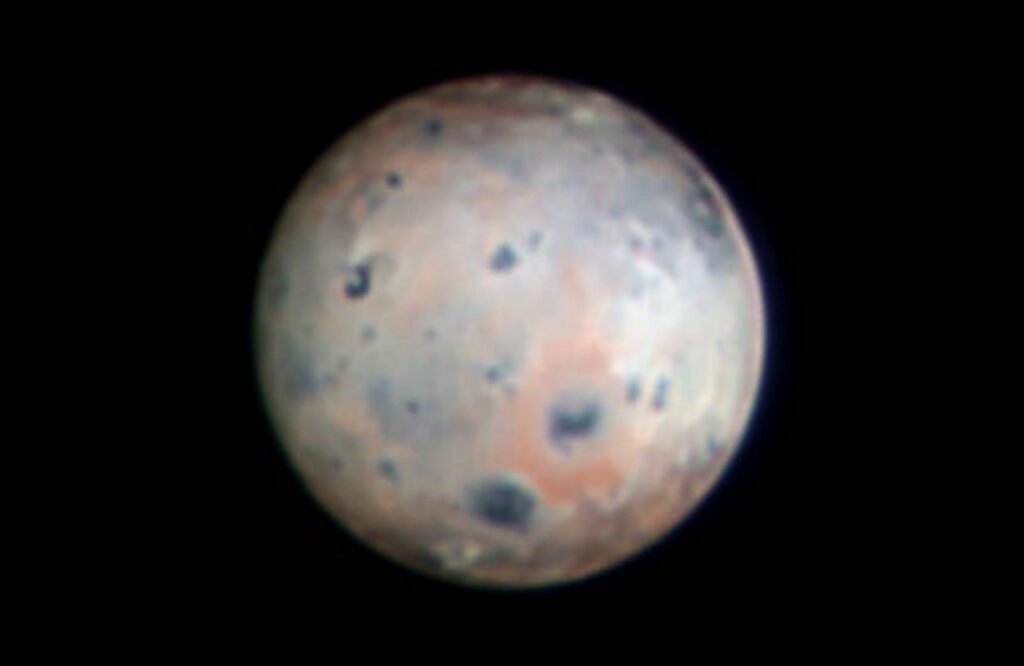American astronomers have published an unprecedented image of Io in terms of detail. It was obtained with a Large Binocular Telescope.

Io is the most geologically active body in the Solar System. There are hundreds of active volcanoes on the surface of this moon of Jupiter, which eruptions constantly reshape its landscape.
Previously, we mostly saw Io in images taken by the Juno probe. But thanks to technological progress, astronomers can now take detailed satellite images using a ground-based observatory.
We are talking about the Large Binocular Telescope located on Mount Graham in Arizona. Recently, a new high-contrast optical instrument SHARK-VIS was installed on it. Coupled with the adaptive optics system compensating for atmospheric turbulence, this allowed the telescope to obtain an unprecedented image of Io in terms of quality. Using it, you can distinguish details up to 80 km in size. According to astronomers, this is equivalent to a snapshot of a 10-cent coin located 160 km away.

The published photo was taken on January 10, 2024. The image combines three spectral ranges — infrared, red and yellow. This is necessary in order to better distinguish surface details. In the photo, you can see a reddish ring around the Pele volcano (below and to the right of the center). Its diameter is 1200 km, it consists of sulfur ejected during eruptions.
To the right of Pele is Pillan Patera, a 70-kilometer-long crater from which lava flows flow. In 1997, a record eruption was recorded in it. Then, over a 100-day period, at least 31 km3 of lava erupted from the crater, and then another 25 km3. In the photo, Patera Pillan can be identified by the white ring surrounding it.
According to scientists, thanks to the new capabilities, they will be able to more quickly monitor the activity of Io and changes on its surface. This will allow them to better understand how powerful eruptions occurred to help shape the surface of the Earth and Moon in their distant past, and why some worlds of the Solar System have volcanoes and others do not.
Earlier we talked about the fact that there is an ocean under the surface of Pluto, similar to the Dead Sea.
According to https://news.arizona.edu


